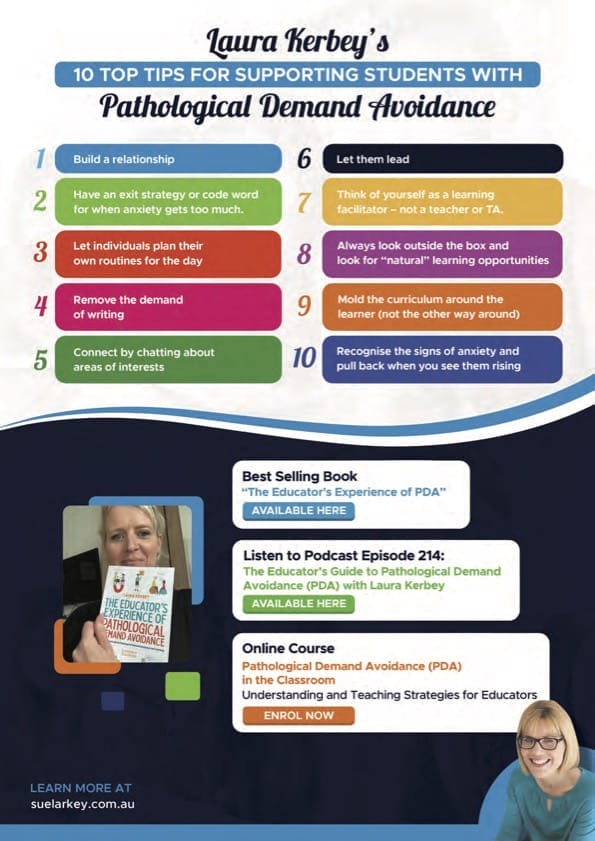SUPPORTING CHILDREN WITH pda and ODD
CHALLENGES AND INSIGHTS
Mother Shares Lived Experience
Discussed in this Episode:
✅ Avoiding triggering words by using alternative language
✅ Creating before school transition routines (5-minute basketball/scooter time)
✅ Providing food and drink immediately after school for regulation
✅ Allowing comfortable clothing adjustments (thongs for after school)
✅ Using “loving push” approach without excessive pressure
✅ Offering choices while providing clear direction
✅ Creating safe spaces from emotional release
✅ Making accommodations for sensory challenges (headphones for music class)
✅ Using gradual exposure through bathroom visits without pressure
✅ Decorating bathroom with special interests (diggers on walls)
Pathological Demand Avoidance (PDA) in the Classroom: Understanding and Teacher Strategies for Educators

Download ‘Laura Kerbey’s 10 top tips for supporting students with pda’

“PDAers need to be given autonomy as they need to feel that they are self driven. We need to let them be self driven, and there to support and guide when the need it.”
For more tips, check out the ‘PDA and ODD Hub‘ for more resources you can use in the classroom

Great Resources to Understand and Support children with PDA
-

The Red Beast
$45.95 -

Super Shamlal – Living and Learning with Pathological Demand Avoidance
$45.95 -

Collaborative Approaches To Learning For Pupils With PDA
$40.95 -

The Defiant Child: A Parent’s Guide to Oppositional Defiant Disorder
$30.95 -

Can I tell you about Pathological Demand Avoidance syndrome?
$31.95 -

Red Beast Anger Workbook
$48.95 -

Can’t Not Won’t. A Story about a child who couldn’t go to School
$42.95 -

The Educator’s Experience of Pathological Demand Avoidance An Illustrated Guide to Pathological Demand Avoidance and Learning
$45.95 -

All About PDA
$37.95
Sue Larkey Books
Showing 16–21 of 21 resultsSorted by popularity













 Sorry we no longer ship items outside Australia. Please consider the digital versions of Sue’s Books –
Sorry we no longer ship items outside Australia. Please consider the digital versions of Sue’s Books – 